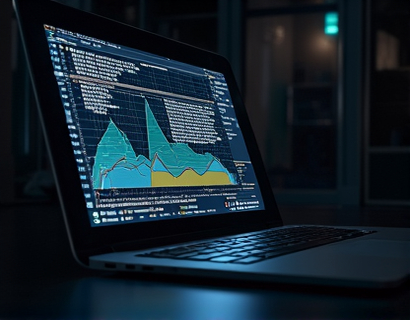Revolutionizing Token Management: Advanced Smart-Contract Solutions for UCASH and U Assets
The landscape of digital asset management is undergoing a transformative shift, driven by the integration of advanced smart-contract solutions. This evolution is particularly significant for tokens tied to leading cryptocurrencies and digital assets, such as UCASH and U assets. These innovations not only enhance security and efficiency but also unlock new possibilities for interacting with the financial ecosystem. This article delves into the cutting-edge smart-contract technologies that are redefining token management, offering insights for cryptocurrency enthusiasts and blockchain developers.
Understanding Token Management
Token management refers to the processes involved in creating, distributing, tracking, and retiring digital tokens. These tokens can represent a variety of assets, including cryptocurrencies, real estate, stocks, and commodities. In the context of UCASH and U assets, tokens serve as a bridge between traditional and digital finance, providing a seamless way to participate in and benefit from the growing crypto ecosystem.
The Role of Smart Contracts in Token Management
Smart contracts are self-executing contracts with the terms of the agreement directly written into code. They run on blockchain networks, ensuring transparency, immutability, and automation. In token management, smart contracts play a pivotal role by automating the creation, distribution, and management of tokens, reducing the need for intermediaries and minimizing human error.
Enhanced Security through Smart Contracts
One of the primary advantages of using smart contracts for token management is the enhanced security they provide. Traditional token management systems often rely on centralized authorities, making them vulnerable to hacks and fraud. Smart contracts, being decentralized and executed on a blockchain, eliminate this risk. Each transaction is verified by the network, ensuring that only authorized actions are performed. This level of security is crucial for tokens tied to valuable assets like UCASH and U assets.
Efficiency and Automation
Smart contracts automate the entire lifecycle of tokens, from issuance to redemption. This automation streamlines processes, reducing the time and cost associated with manual management. For instance, when a token is created, the smart contract can automatically allocate the corresponding amount of UCASH or U asset, ensuring a precise and instantaneous transfer. Similarly, when a token is redeemed, the smart contract can automatically return the asset to the rightful owner without the need for manual intervention.
Advanced Smart-Contract Solutions for UCASH and U Assets
The integration of advanced smart-contract solutions specifically designed for UCASH and U assets represents a significant leap forward in digital asset management. These solutions are tailored to meet the unique requirements of these tokens, ensuring optimal performance and reliability.
Customizable Token Parameters
Advanced smart contracts allow for the customization of token parameters, such as supply, distribution mechanisms, and redeemability conditions. For UCASH and U assets, these parameters can be finely tuned to align with the specific use cases and goals of the underlying assets. For example, a token tied to UCASH might have a fixed supply to maintain value stability, while a U asset token could have a dynamic supply based on market demand.
Real-Time Asset Pegging
One of the most innovative features of smart contracts for UCASH and U assets is real-time asset pegging. This mechanism ensures that the value of the token remains closely tied to the underlying asset. Smart contracts can automatically adjust the token price based on the current value of UCASH or U assets, providing users with a reliable and transparent way to track their investments. This real-time pegging eliminates the need for manual adjustments and reduces the risk of discrepancies.
Transparent and Auditable Transactions
Blockchain's inherent transparency is a cornerstone of smart-contract-based token management. Every transaction involving UCASH or U asset tokens is recorded on the blockchain, creating an immutable and auditable trail. This transparency builds trust among users and stakeholders, as they can verify the integrity of transactions and the status of tokens at any time. For regulatory compliance, this level of transparency is invaluable, ensuring that all activities adhere to legal standards.
Use Cases and Applications
The applications of advanced smart-contract solutions for UCASH and U assets are diverse and far-reaching, catering to various sectors and use cases.
Decentralized Finance (DeFi)
In the DeFi space, smart-contract-based token management enables the creation of decentralized financial products such as lending, borrowing, and yield farming. Tokens tied to UCASH and U assets can be used as collateral, facilitating access to financial services without the need for traditional banking infrastructure. This democratizes finance, making it more accessible to a global audience.
Supply Chain and Provenance Tracking
For assets like U assets, which may be tied to physical goods or supply chain items, smart contracts can track the provenance and movement of these assets. Tokens can represent specific units or batches, ensuring that each step in the supply chain is recorded and verifiable. This enhances traceability and accountability, reducing the risk of fraud and counterfeiting.
Gaming and In-Game Economies
In the gaming industry, smart-contract-based tokens can create immersive and economically viable in-game economies. Tokens tied to UCASH or U assets can be used for in-game purchases, rewards, and trading. The automation and security provided by smart contracts ensure a fair and transparent gaming experience, where players can trust the system to manage their assets reliably.
Challenges and Considerations
While the benefits of advanced smart-contract solutions for UCASH and U assets are clear, there are several challenges and considerations that must be addressed to fully realize their potential.
Technical Complexity
Developing and deploying smart contracts requires a deep understanding of blockchain technology and programming. For organizations new to this space, the learning curve can be steep. However, the increasing availability of development tools and frameworks is making it more accessible, reducing the barrier to entry for blockchain developers.
Regulatory Compliance
The regulatory landscape for digital assets is still evolving, and compliance remains a critical concern. Smart-contract-based token management must adhere to local and international regulations, which can vary significantly. Ensuring compliance involves staying informed about regulatory changes and designing smart contracts that meet legal requirements.
Interoperability
For maximum utility, smart-contract solutions should be interoperable across different blockchain platforms. This allows for seamless integration and interaction with other decentralized applications and services. While cross-chain technologies are advancing, achieving full interoperability remains a challenge that needs ongoing attention.
Future Prospects
The future of token management with advanced smart-contract solutions looks promising, with several trends and developments on the horizon.
Enhanced User Interfaces
As the technology matures, user interfaces for managing tokens will become more intuitive and user-friendly. This will lower the barrier for non-technical users, making advanced token management accessible to a broader audience. Enhanced UIs will also provide better insights and controls, empowering users to make informed decisions.
Integration with Traditional Finance
The bridge between cryptocurrency and traditional finance is strengthening, with smart-contract solutions facilitating seamless interactions. Tokens tied to UCASH and U assets can be integrated with traditional financial instruments, enabling hybrid investment strategies and broader market participation.
Scalability and Performance
As the adoption of blockchain and smart contracts grows, scalability and performance will become increasingly important. Innovations such as layer 2 solutions and optimized smart-contract designs will address these concerns, ensuring that token management systems can handle high volumes of transactions without compromising speed or reliability.










































